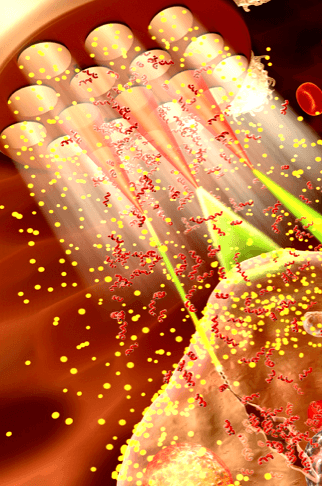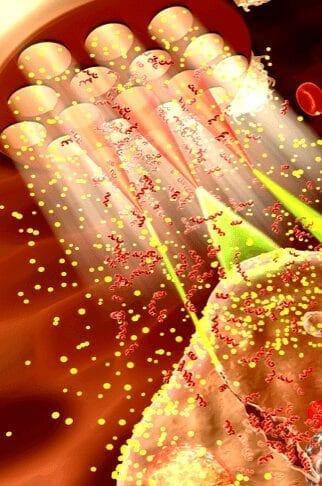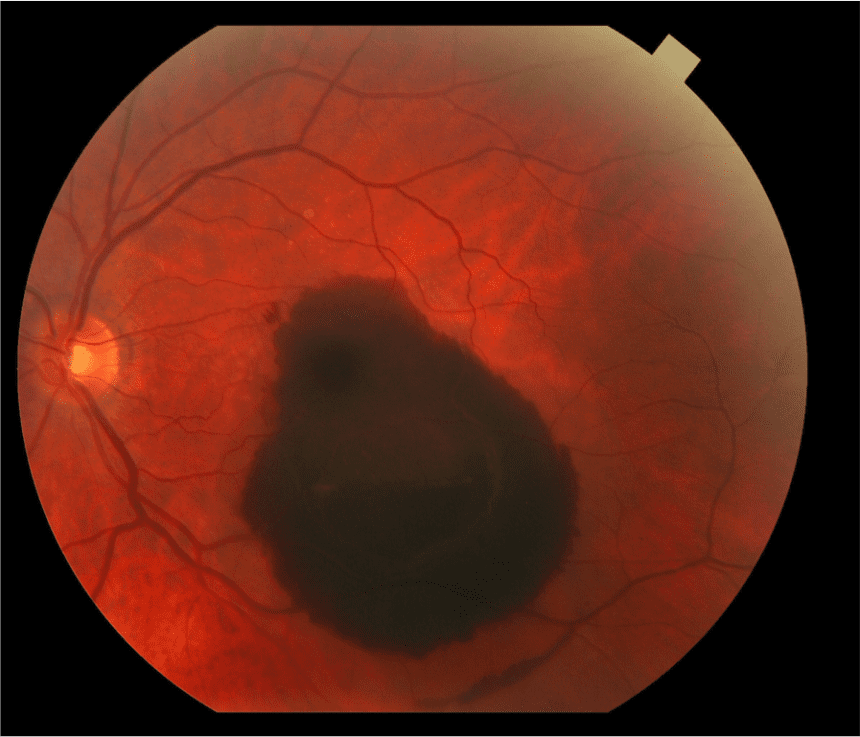
Millions of adults over age 50 struggle each year with vision loss caused by damage to the retina or common macular degeneration.
Physics researchers at The University of Texas at Arlington have developed a new platform that uses ultrafast near-infrared lasers to deliver gene therapy to damaged areas of the retina to enable vision restoration in patients with photo-degenerative diseases.
“Most therapies focus on slowing down or halting degeneration but cannot target already-damaged areas of the retina,” said Samarenda Mohanty, assistant professor of physics and head of UTA’s Biophysics and Physiology Group, who led the research. “Our capacity to specifically target these damaged areas cell by cell opens up a new world of possibilities for vision restoration.”
Mohanty demonstrated the effectiveness of the new method in a recent article published by the Nature journal Light: Science & Applications. In his study, Mohanty and his team compared their ultrafast near-infrared laser-based method of delivering genes with the popular non-viral chemical gene delivery system known as lipofection.
The laser-based method creates a transient sub-mircometer hole that allows the gene for light-sensitive proteins, or opsins, to permeate into the damaged retinal cell. The genes are then activated to produce the opsins, which attach to the cell membrane and convert external light into the photocurrent signals that are basis of sight.
In Mohanty’s experiments, the laser-based method gave better results than chemical gene delivery in terms of the amount of opsins produced and the number expressed on the membrane of the cell. It was also able to target cells one by one where the chemical gene delivery system cannot be that specific.
Furthermore, the laser-based method was also able to effectively deliver large packages of genes encoding a wide spectrum of colors to damaged retinal cells, which could enable broadband vision restoration in patients with photo-degenerative diseases.
With aging populations in many countries, the number of macular degeneration sufferers is expected to reach 196 million worldwide by 2020 and increase to 288 million by 2040, according to The Lancet.
Read more: UTA PHYSICISTS OFFER HOPE FOR MACULAR DEGENERATION SUFFERERS
The Latest on: Macular Degeneration
[google_news title=”” keyword=”Macular Degeneration” num_posts=”10″ blurb_length=”0″ show_thumb=”left”]
via Google News
The Latest on: Macular Degeneration
- Nanoscope Therapeutics Announces Presentations at the ARVO Annual Meetingon May 2, 2024 at 4:00 am
Nanoscope Therapeutics Inc., a late-stage clinical biotechnology company developing gene therapies for retinal degenerative diseases, today announced that its Multi-Characteristic Opsin (MCO) gene ...
- Content creator claims wearing sunglasses can harm your eyes. So, have we been wrong all this while?on May 2, 2024 at 3:00 am
“Sunglasses don’t protect your eyes, they actually do the opposite,” he cautions his followers. In the post, he continues to explain the reason behind this bold claim. “Human biology dictates that ...
- Scientists find potential treatment target for leading cause of blindnesson May 2, 2024 at 2:26 am
US scientists have found answers to why treatment for neovascular age-related macular degeneration (AMD) -- a leading cause of blindness -- does not benefit all; and also developed a potential ...
- Harrow: The Bull Thesis Is On Track, But Short-Term Challenges Loomon May 2, 2024 at 1:42 am
Harrow's ImprimisRxhas grown to become the largest ophthalmic compounding pharmacy in the US in only nine years. Check out my analysis of HROW stock.
- Macular Disease Foundation warns more than one drink a day can lead to vision losson May 1, 2024 at 8:36 am
is linked to a larger risk of age-related macular degeneration or irreversible vision loss. More than 1.5 million Australians are affected by AMD and the foundation led a systematic review of alcohol ...
- Luxa Biotechnology Awarded $4 Million CIRM Grant to Support Clinical Trial of Adult RPESC-RPE-4W Therapy for Dry Age-related Macular Degenerationon May 1, 2024 at 4:00 am
Luxa Biotechnology (LuxaBio), a joint venture between Y2 Solution Co. Ltd, Seoul, South Korea and the Neural Stem Cell Institute (NSCI) in Rensselaer, New York, today announced receipt of a $4 million ...
- Lighthouse Guild Receives Grant from American Macular Degeneration Foundation (AMDF)on April 30, 2024 at 8:56 pm
Funding to study pros and cons of assistive devices for people with vision impairment.
- Texas Company’s Mission to Cure Macular Degeneration Blindnesson April 30, 2024 at 8:14 am
Mesogen Inc. out of The Woodlands, Texas, has developed a transplantable Retinal Pigmented Epithelium (RPE) patch to cure Macular Degeneration Blindness using autologous bone marrow-derived stem cells ...
- Home vision tests offer limited diagnostic accuracy for neovascular AMDon April 29, 2024 at 10:29 am
No home-monitoring vision test has the diagnostic accuracy of hospital eye service follow-up clinics to identify active neovascular age-related macular degeneration (nAMD), according to a study ...
- Local group helps macular degeneration patients cope with vision losson April 26, 2024 at 3:07 am
To provide opportunity for encouragement, Phoenix-based Associated Retina Consultants, in coordination with the International Low Vision Support Group, has established a Macular Degeneration Support ...
via Bing News











